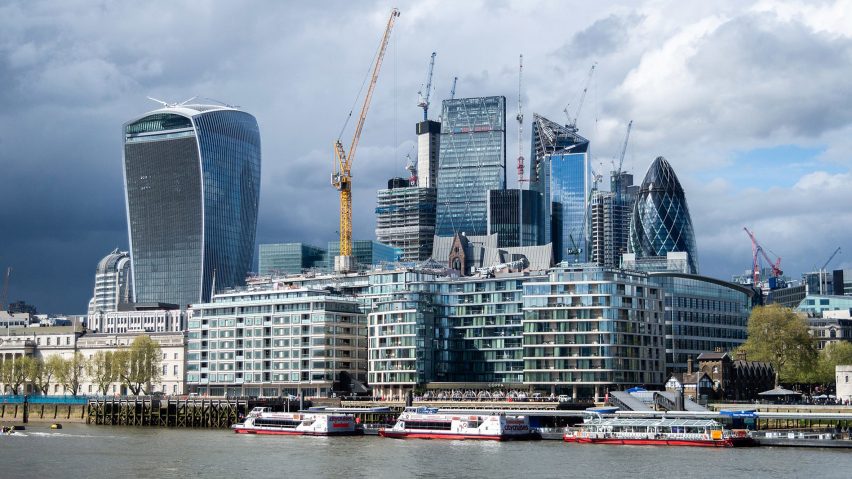The City of London has introduced a set of guidelines for proposed developments to protect pedestrians and cyclists from wind tunnels created by the increasing number of skyscrapers.
Described by the City of London Corporation as the "UK's first wind microclimate guidelines", the rules will require proposed buildings over 25-metres high to undergo strict wind-testing to determine the impact the development will have at street level.
The guidance has been introduced with the aim of protecting pedestrians and cyclists from gusts of wind that may push them onto roads and into the path of vehicles.
"With the number of tall buildings in the Square Mile growing, it is important that the knock-on effects of new developments on wind at street-level are properly considered," said Alastair Moss, chair of the planning and transportation committee.
Under the guidelines, planned buildings between 25 and 50 metres will need to undertake computational simulations or wind-tunnel testing, while those taller than 50 metres will need to do both.
For tall buildings over 50 metres this testing will have to be undertaken by a separate independent consultant.
Guidance sets out acceptable wind speeds
The guidelines set out acceptable levels of wind speed dependent on how areas alongside proposed developments are intended to be used.
Areas that house restaurant and cafes where customers are frequently seated require wind speeds of under 2.5 metres per second, whilst those with regular pedestrian movement, such as pavements, must have wind speeds below eight metres per second.
Under the guidance all wind speeds of over eight metres per second are considered "uncomfortable", while speeds of over 15 metres per second present a safety issue for pedestrians.
Rules aim to "put cyclists and pedestrians at the heart of planning"
According to the City of London the guidance has been introduced as part of its plan to make the city a comfortable place for pedestrians and cyclists.
"These guidelines mark another significant step that the city corporation is taking to put cyclists and pedestrians at the heart of planning in the Square Mile, prioritising their safety and experience," added Moss.
"From the transport strategy to the City Plan, we are ensuring that our streets are a comfortable and pleasant place to live, work and visit."
Guidance could be expanded across London
At present the guidance only applies to buildings within the City of London, however, the corporation hopes that they will form the basis for wider guidance that could be used across the whole city.
"We hope these groundbreaking guidelines can create a blueprint for others by delivering safer, more enjoyable streets that meet the evolving needs of this great City," explained Moss.
The guidance has been introduced following reports in 2015 that Rafael Viñoly's Walkie Talkie skyscraper was channelling gusts of wind strong enough to knock people over.
At the time, the City of London's head of design Gwyn Richards said: "The wind outcome at street level experienced post-construction on a number of projects differs somewhat to the conditions we were expecting from the one outlined in the planning application wind-assessments."
"This is why we are asking for an independent verification of the wind studies on a number of new schemes to ensure as rigorous and resilient an approach as possible," he continued.
Over the past decade an increasing number of skyscrapers have been built in the City of London, with numerous more planned across London.
Main photo is by Tristan Surtel.

